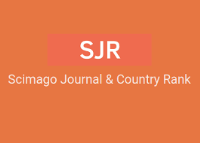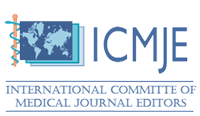Причины появления, механизмы, скорость развития, пути распространения и последствия устойчивости к антибиотикам
Аннотация
Проблема антибиотикорезистентности сейчас как никогда актуальна. Кризис, связанный с распространением устойчивости к антибиотикам, приближается с каждым днем. Новых антибактериальных препаратов и методов, позволяющих эффективно бороться с устойчивыми микроорганизмами, не появляется, следовательно, появляется серьёзнейший вызов для всего человечества, так как от эффективности антибиотиков напрямую зависят такие важные для жизни человека сферы как медицина и сельское хозяйство.
Цель исследования. Данная статья позволяет сформировать системный взгляд на явление антибиотикорезистентности.
Материал и методы. Для анализа литературы были использованы материалы из ресурсов PubMed и PubMed Central Национальной медицинской библиотеки США, Google Scholar, Elsevier Clinical Key и Elsevier Science Direct. Выборку составили научные статьи, посвященные антибиотикорезистентности.
Результат. В статье раскрываются причины появления, механизмы, скорость развития, способы и пути распространения антибиотикорезистентности, а также последствия приобретения устойчивости для микроорганизмов и способы сдерживания антибиотикорезистентности.
Благодарности. Работа выполнена при поддержке Министерства науки и высшего образования Российской Федерации в рамках Программы развития Уральского федерального университета имени первого Президента России Б. Н. Ельцина в соответствии с программой стратегического академического лидерства "Приоритет-2030".
EDN: YWNYKM
Скачивания
Литература
Всемирная организация здравоохранения. (2014). Глобальная стратегия ВОЗ по сдерживанию устойчивости к противомикробным препаратам (World Health Organization. (2014). WHO global strategy for containment of antimicrobial resistance). Получено из https://iris.who.int/handle/10665/91617?locale-attribute=ru&
Всемирная организация здравоохранения. (2015). Глобальный план действий по борьбе с устойчивостью к противомикробным препаратам (World Health Organization. (2015). Global action plan on antimicrobial resistance). Получено из https://www.who.int/ru/publications/i/item/9789241509763
Национальная ассоциация специалистов по контролю инфекций (НАСКИ). Программа СКАТ (Стратегия Контроля Антимикробной Терапии) при оказании стационарной медицинской помощи (National Association of Infection Control Specialists (NASCI). SCAT Program (Antimicrobial Therapy Control Strategy) in hospital care). Получено из https://nasci.ru/?id=4236
Правительство Российской Федерации. (2017). Распоряжение № 2045-р от 3 октября 2017 г. Об утверждении Стратегии предупреждения распространения антимикробной резистентности (Government of the Russian Federation. (2017). Order No. 2045-r dated October 3, 2017. On approval of the Strategy for preventing the spread of antimicrobial resistance).
Химическая энциклопедия (Том 4). (1995). Под ред. Н. С. Зефирова. Москва: Большая Российская энциклопедия. 639 с. (Chemical Encyclopedia (Vol. 4). (1995). Ed. by N. S. Zefirov. Moscow: Great Russian Encyclopedia. 639 p.)
Ahlstrom, C. A., van Toor, M. L., Woksepp, H., Chandler, J. C., Reed, J. A., Reeves, A. B., Waldenström, J., Franklin, A. B., Douglas, D. C., Bonnedahl, J., & Ramey, A. M. (2021). Evidence for continental-scale dispersal of antimicrobial resistant bacteria by landfill-foraging gulls. The Science of the Total Environment, 764. https://doi.org/10.1016/j.scitotenv.2020.144551 EDN: https://elibrary.ru/rsowgv
Ahmad, M., & Khan, A. U. (2019). Global economic impact of antibiotic resistance: A review. Journal of Global Antimicrobial Resistance, 19, 313-316. https://doi.org/10.1016/j.jgar.2019.05.024
Akhtar, M., Hirt, H., & Zurek, L. (2009). Horizontal transfer of the tetracycline resistance gene tetM mediated by pCF10 among Enterococcus faecalis in the house fly (Musca domestica L.) alimentary canal. Microbial Ecology, 58(3), 509-518. https://doi.org/10.1007/s00248-009-9533-9. EDN: https://elibrary.ru/qynlsu
Aldred, K. J., Kerns, R. J., & Osheroff, N. (2014). Mechanism of quinolone action and resistance. Biochemistry, 53(10), 1565-1574. https://doi.org/10.1021/bi5000564
Alduina, R., Gambino, D., Presentato, A., Gentile, A., Sucato, A., Savoca, D., Filippello, S., Visconti, G., Caracappa, G., Vicari, D., & Arculeo, M. (2020). Is Caretta Caretta a Carrier of Antibiotic Resistance in the Mediterranean Sea? Antibiotics (Basel, Switzerland), 9(3). https://doi.org/10.3390/antibiotics9030116. EDN: https://elibrary.ru/ldlkjc
Anacarso, I., Iseppi, R., Sabia, C., Messi, P., Condò, C., Bondi, M., & de Niederhäusern, S. (2016). Conjugation-Mediated Transfer of Antibiotic-Resistance Plasmids Between Enterobacteriaceae in the Digestive Tract of Blaberus craniifer (Blattodea: Blaberidae). Journal of Medical Entomology, 53(3), 591-597. https://doi.org/10.1093/jme/tjw005
Andersson, D. I. (2003). Persistence of antibiotic resistant bacteria. Current Opinion in Microbiology, 6(5), 452-456. https://doi.org/10.1016/j.mib.2003.09.001
Andersson, D. I., & Hughes, D. (2010). Antibiotic resistance and its cost: is it possible to reverse resistance? Nature Reviews. Microbiology, 8(4), 260-271. https://doi.org/10.1038/nrmicro2319
Andersson, D. I., & Hughes, D. (2014). Microbiological effects of sublethal levels of antibiotics. Nature Reviews. Microbiology, 12(7), 465-478. https://doi.org/10.1038/nrmicro3270
Andersson, D. I., & Hughes, D. (2011). Persistence of antibiotic resistance in bacterial populations. FEMS Microbiology Reviews, 35(5), 901-911. https://doi.org/10.1111/j.1574-6976.2011.00289.x
Andersson, D. I., & Levin, B. R. (1999). The biological cost of antibiotic resistance. Current Opinion in Microbiology, 2(5), 489-493. https://doi.org/10.1016/s1369-5274(99)00005-3
Antibiotic resistance threats in the United States, 2013. Centers for Disease Control and Prevention. URL: https://www.cdc.gov/drugresistance/pdf/ar-threats-2013-508.pdf (дата обращения: 17.03.24).
Antimicrobial resistance. World Health Organization. URL: https://www.who.int/news-room/fact-sheets/detail/antimicrobial-resistance (дата обращения: 17.03.24).
Baquero, F., Alvarez-Ortega, C., & Martinez, J. L. (2009). Ecology and evolution of antibiotic resistance. Environmental microbiology reports, 1(6), 469-476. https://doi.org/10.1111/j.1758-2229.2009.00053.x
Berendonk, T. U., Manaia, C. M., Merlin, C., Fatta-Kassinos, D., Cytryn, E., Walsh, F., Bürgmann, H., Sørum, H., Norström, M., Pons, M. N., Kreuzinger, N., Huovinen, P., Stefani, S., Schwartz, T., Kisand, V., Baquero, F., & Martinez, J. L. (2015). Tackling antibiotic resistance: the environmental framework. Nature reviews. Microbiology, 13(5), 310-317. https://doi.org/10.1038/nrmicro3439
Björkman, J., & Andersson, D. I. (2000). The cost of antibiotic resistance from a bacterial perspective. Drug resistance updates: reviews and commentaries in antimicrobial and anticancer chemotherapy, 3(4), 237-245. https://doi.org/10.1054/drup.2000.0147
Björkman, J., Hughes, D., & Andersson, D. I. (1998). Virulence of antibiotic-resistant Salmonella typhimurium. Proceedings of the National Academy of Sciences of the United States of America, 95(7), 3949-3953. https://doi.org/10.1073/pnas.95.7.3949
Björkman, J., Samuelsson, P., Andersson, D. I., & Hughes, D. (1999). Novel ribosomal mutations affecting translational accuracy, antibiotic resistance and virulence of Salmonella typhimurium. Molecular microbiology, 31(1), 53-58. https://doi.org/10.1046/j.1365-2958.1999.01142.x
Boss, L., Labudda, Ł., Węgrzyn, G., Hayes, F., & Kędzierska, B. (2013). The axe-txe complex of Enterococcus faecium presents a multilayered mode of toxin-antitoxin gene expression regulation. PloS one, 8(9). https://doi.org/10.1371/journal.pone.0073569
Bush, K. (2013). Proliferation and significance of clinically relevant β-lactamases. Annals of the New York Academy of Sciences, 1277, 84-90. https://doi.org/10.1111/nyas.12023
Cabello, F. C., Godfrey, H. P., Buschmann, A. H., & Dölz, H. J. (2016). Aquaculture as yet another environmental gateway to the development and globalisation of antimicrobial resistance. The Lancet. Infectious diseases, 16(7). https://doi.org/10.1016/S1473-3099(16)00100-6
Campbell, E. A., Korzheva, N., Mustaev, A., Murakami, K., Nair, S., Goldfarb, A., & Darst, S. A. (2001). Structural mechanism for rifampicin inhibition of bacterial RNA polymerase. Cell, 104(6), 901-912. https://doi.org/10.1016/s0092-8674(01)00286-0. EDN: https://elibrary.ru/lzjgvr
Chen, X. H., Koumoutsi, A., Scholz, R., & Borriss, R. (2009). More than anticipated - production of antibiotics and other secondary metabolites by Bacillus amyloliquefaciens FZB42. Journal of Molecular Microbiology and Biotechnology, 16(1-2), 14-24. https://doi.org/10.1159/000142891
Connell, S. R., Tracz, D. M., Nierhaus, K. H., & Taylor, D. E. (2003). Ribosomal protection proteins and their mechanism of tetracycline resistance. Antimicrobial Agents and Chemotherapy, 47(12), 3675-3681. https://doi.org/10.1128/AAC.47.12.3675-3681.2003. EDN: https://elibrary.ru/lvmgoz
Dantas, G., Sommer, M. O., Oluwasegun, R. D., & Church, G. M. (2008). Bacteria subsisting on antibiotics. Science, 320(5872), 100-103. https://doi.org/10.1126/science.1155157
Davis, G. S., & Price, L. B. (2016). Recent Research Examining Links Among Klebsiella pneumoniae from Food, Food Animals, and Human Extraintestinal Infections. Current Environmental Health Reports, 3(2), 128-135. https://doi.org/10.1007/s40572-016-0089-9. EDN: https://elibrary.ru/lhyozr
D’Costa, V. M., McGrann, K. M., Hughes, D. W., & Wright, G. D. (2006). Sampling the antibiotic resistome. Science, 311(5759), 374-377. https://doi.org/10.1126/science.1120800
Deris, J. B., Kim, M., Zhang, Z., Okano, H., Hermsen, R., Groisman, A., & Hwa, T. (2013). The innate growth bistability and fitness landscapes of antibiotic-resistant bacteria. Science, 342(6162). https://doi.org/10.1126/science.1237435
Di Luca, M. C., Sørum, V., Starikova, I., Kloos, J., Hülter, N., Naseer, U., Johnsen, P. J. (2017). Low biological cost of carbapenemase-encoding plasmids following transfer from Klebsiella pneumoniae to Escherichia coli. Journal of Antimicrobial Chemotherapy, 72(1), 85-89. https://doi.org/10.1093/jac/dkw350
Dimopoulou, A., Theologidis, I., Liebmann, B., Kalantidis, K., Vassilakos, N., & Skandalis, N. (2019). Bacillus amyloliquefaciens MBI600 differentially induces tomato defense signaling pathways depending on plant part and dose of application. Scientific reports, 9(1), 19120. https://doi.org/10.1038/s41598-019-55645-2. EDN: https://elibrary.ru/kleyug
Domínguez-Santos, R., Pérez-Cobas, A. E., Cuti, P., Pérez-Brocal, V., García-Ferris, C., Moya, A., Latorre, A., & Gil, R. (2021). Interkingdom Gut Microbiome and Resistome of the Cockroach Blattella germanica. mSystems, 6(3). https://doi.org/10.1128/mSystems.01213-20. EDN: https://elibrary.ru/hgwtvu
Dönhöfer, A., Franckenberg, S., Wickles, S., Berninghausen, O., Beckmann, R., & Wilson, D. N. (2012). Structural basis for TetM-mediated tetracycline resistance. Proceedings of the National Academy of Sciences of the United States of America, 109(42), 16900-16905. https://doi.org/10.1073/pnas.1208037109
D’Souza, A. W., Potter, R. F., Wallace, M., Shupe, A., Patel, S., Sun, X., Gul, D., Kwon, J. H., Andleeb, S., Burnham, C. D., & Dantas, G. (2019). Spatiotemporal dynamics of multidrug resistant bacteria on intensive care unit surfaces. Nature communications, 10(1). https://doi.org/10.1038/s41467-019-12563-1. EDN: https://elibrary.ru/wiuwrb
Du, D., Wang, Z., James, N. R., Voss, J. E., Klimont, E., Ohene-Agyei, T., Venter, H., Chiu, W., & Luisi, B. F. (2014). Structure of the AcrAB-TolC multidrug efflux pump. Nature, 509(7501), 512-515. https://doi.org/10.1038/nature13205
Durão, P., Trindade, S., Sousa, A., & Gordo, I. (2015). Multiple Resistance at No Cost: Rifampicin and Streptomycin a Dangerous Liaison in the Spread of Antibiotic Resistance. Molecular biology and evolution, 32(10), 2675-2680. https://doi.org/10.1093/molbev/msv143
Enne, V. I., Bennett, P. M., Livermore, D. M., & Hall, L. M. (2004). Enhancement of host fitness by the sul2-coding plasmid p9123 in the absence of selective pressure. The Journal of antimicrobial chemotherapy, 53(6), 958-963. https://doi.org/10.1093/jac/dkh217. EDN: https://elibrary.ru/iqoguz
Evans, D. R., Griffith, M. P., Sundermann, A. J., Shutt, K. A., Saul, M. I., Mustapha, M. M., Marsh, J. W., Cooper, V. S., Harrison, L. H., & Van Tyne, D. (2020). Systematic detection of horizontal gene transfer across genera among multidrug-resistant bacteria in a single hospital. eLife, 9. https://doi.org/10.7554/eLife.53886. EDN: https://elibrary.ru/sjulsh
Fajardo, A., Linares, J. F., & Martínez, J. L. (2009). Towards an ecological approach to antibiotics and antibiotic resistance genes. Clinical microbiology and infection: the official publication of the European Society of Clinical Microbiology and Infectious Diseases, 15, 14-16. https://doi.org/10.1111/j.1469-0691.2008.02688.x
Faleye, A. C., Adegoke, A. A., Ramluckan, K., Fick, J., Bux, F., & Stenström, T. A. (2019). Concentration and reduction of antibiotic residues in selected wastewater treatment plants and receiving waterbodies in Durban, South Africa. The Science of the total environment, 678, 10-20. https://doi.org/10.1016/j.scitotenv.2019.04.410
Felis, E., Kalka, J., Sochacki, A., Kowalska, K., Bajkacz, S., Harnisz, M., & Korzeniewska, E. (2020). Antimicrobial pharmaceuticals in the aquatic environment - occurrence and environmental implications. European journal of pharmacology, 866. https://doi.org/10.1016/j.ejphar.2019.172813. EDN: https://elibrary.ru/hfhpaq
Floss, H. G., & Yu, T. W. (2005). Rifamycin-mode of action, resistance, and biosynthesis. Chemical reviews, 105(2), 621-632. https://doi.org/10.1021/cr030112j. EDN: https://elibrary.ru/lzjigz
Forsberg, K. J., Reyes, A., Wang, B., Selleck, E. M., Sommer, M. O., & Dantas, G. (2012). The Shared Antibiotic Resistome of Soil Bacteria and Human Pathogens. Science (New York, N.Y.), 337(6098), 1107-1111. https://doi.org/10.1126/science.1220761
Franklin, A. M., Williams, C. F., & Watson, J. E. (2018). Assessment of Soil to Mitigate Antibiotics in the Environment Due to Release of Wastewater Treatment Plant Effluent. Journal of environmental quality, 47(6), 1347-1355. https://doi.org/10.2134/jeq2018.02.0076
Furushita, M., Shiba, T., Maeda, T., Yahata, M., Kaneoka, A., Takahashi, Y., Torii, K., Hasegawa, T., & Ohta, M. (2003). Similarity of tetracycline resistance genes isolated from fish farm bacteria to those from clinical isolates. Applied and environmental microbiology, 69(9), 5336-5342. https://doi.org/10.1128/AEM.69.9.5336-5342.2003. EDN: https://elibrary.ru/xoolzh
Gardete, S., & Tomasz, A. (2014). Mechanisms of vancomycin resistance in Staphylococcus aureus. The Journal of clinical investigation, 124(7), 2836-2840. https://doi.org/10.1172/JCI68834
Hall, A. R., Iles, J. C., & MacLean, R. C. (2011). The fitness cost of rifampicin resistance in Pseudomonas aeruginosa depends on demand for RNA polymerase. Genetics, 187(3), 817-822. https://doi.org/10.1534/genetics.110.124628. EDN: https://elibrary.ru/okrbed
Hansen, T. A., Joshi, T., Larsen, A. R., Andersen, P. S., Harms, K., Mollerup, S., Willerslev, E., Fuursted, K., Nielsen, L. P., & Hansen, A. J. (2016). Vancomycin gene selection in the microbiome of urban Rattus norvegicus from hospital environment. Evolution, medicine, and public health, 2016(1), 219-226. https://doi.org/10.1093/emph/eow021
Hatosy, S. M., & Martiny, A. C. (2015). The ocean as a global reservoir of antibiotic resistance genes. Applied and environmental microbiology, 81(21), 7593-7599. https://doi.org/10.1128/AEM.00736-15
Hayes, F. (2003). Toxins-antitoxins: plasmid maintenance, programmed cell death, and cell cycle arrest. Science (New York, N.Y.), 301(5639), 1496-1499. https://doi.org/10.1126/science.1088157. EDN: https://elibrary.ru/mbiiyb
Hayes, F., & Van Melderen, L. (2011). Toxins-antitoxins: diversity, evolution and function. Critical reviews in biochemistry and molecular biology, 46(5), 386-408. https://doi.org/10.3109/10409238.2011.600437. EDN: https://elibrary.ru/phtfml
He, Y., Jin, L., Sun, F., Hu, Q., & Chen, L. (2016). Antibiotic and heavy-metal resistance of Vibrio parahaemolyticus isolated from fresh shrimps in Shanghai fish markets, China. Environmental science and pollution research international, 23(15), 15033-15040. https://doi.org/10.1007/s11356-016-6614-4. EDN: https://elibrary.ru/nxrurq
Hellweger, F. L. (2013). Escherichia coli adapts to tetracycline resistance plasmid (pBR322) by mutating endogenous potassium transport: in silico hypothesis testing. FEMS microbiology ecology, 83(3), 622-631. https://doi.org/10.1111/1574-6941.12019
Hobbs, E. C., Yin, X., Paul, B. J., Astarita, J. L., & Storz, G. (2012). Conserved small protein associates with the multidrug efflux pump AcrB and differentially affects antibiotic resistance. Proceedings of the National Academy of Sciences of the United States of America, 109(41), 16696-16701. https://doi.org/10.1073/pnas.1210093109
Hooper, D. C. (2002). Fluoroquinolone resistance among Gram-positive cocci. The Lancet. Infectious diseases, 2(9), 530-538. https://doi.org/10.1016/s1473-3099(02)00369-9
Howden, B. P., Davies, J. K., Johnson, P. D., Stinear, T. P., & Grayson, M. L. (2010). Reduced vancomycin susceptibility in Staphylococcus aureus, including vancomycin-intermediate and heterogeneous vancomycin-intermediate strains: resistance mechanisms, laboratory detection, and clinical implications. Clinical microbiology reviews, 23(1), 99-139. https://doi.org/10.1128/CMR.00042-09. EDN: https://elibrary.ru/lsbgte
Howden, B. P., McEvoy, C. R., Allen, D. L., Chua, K., Gao, W., Harrison, P. F., Bell, J., Coombs, G., Bennett-Wood, V., Porter, J. L., Robins-Browne, R., Davies, J. K., Seemann, T., & Stinear, T. P. (2011). Evolution of multidrug resistance during Staphylococcus aureus infection involves mutation of the essential two component regulator WalKR. PLoS pathogens, 7(11), e1002359. https://doi.org/10.1371/journal.ppat.1002359
Howden, B. P., Stinear, T. P., Allen, D. L., Johnson, P. D., Ward, P. B., & Davies, J. K. (2008). Genomic analysis reveals a point mutation in the two-component sensor gene graS that leads to intermediate vancomycin resistance in clinical Staphylococcus aureus. Antimicrobial agents and chemotherapy, 52(10), 3755-3762. https://doi.org/10.1128/AAC.01613-07. EDN: https://elibrary.ru/mmfyfv
Hu, H., Johani, K., Gosbell, I. B., Jacombs, A. S., Almatroudi, A., Whiteley, G. S., Deva, A. K., Jensen, S., & Vickery, K. (2015). Intensive care unit environmental surfaces are contaminated by multidrug-resistant bacteria in biofilms: combined results of conventional culture, pyrosequencing, scanning electron microscopy, and confocal laser microscopy. The Journal of hospital infection, 91(1), 35-44. https://doi.org/10.1016/j.jhin.2015.05.016
Hurdle, J. G., O’Neill, A. J., Mody, L., Chopra, I., & Bradley, S. F. (2005). In vivo transfer of high-level mupirocin resistance from Staphylococcus epidermidis to methicillin-resistant Staphylococcus aureus associated with failure of mupirocin prophylaxis. The Journal of antimicrobial chemotherapy, 56(6), 1166-1168. https://doi.org/10.1093/jac/dki387. EDN: https://elibrary.ru/iqqvkn
Imamovic, L., & Sommer, M. O. (2013). Use of collateral sensitivity networks to design drug cycling protocols that avoid resistance development. Science translational medicine, 5(204), 204ra132. https://doi.org/10.1126/scitranslmed.3006609
Investigation Summary: Factors Potentially Contributing to the Contamination of Romaine Lettuce Implicated in the Fall 2018 Multi-State Outbreak of E. coli O157:H7. US Food and Drug Administration. URL: https://www.fda.gov/food/outbreaks-foodborne-illness/investigation-summary-factors-potentially-contributing-contamination-romaine-lettuce-implicated-fall (дата обращения: 17.03.24).
Jacobsen, L., Wilcks, A., Hammer, K., Huys, G., Gevers, D., & Andersen, S. R. (2007). Horizontal transfer of tet(M) and erm(B) resistance plasmids from food strains of Lactobacillus plantarum to Enterococcus faecalis JH2-2 in the gastrointestinal tract of gnotobiotic rats. FEMS Microbiology Ecology, 59(1), 158-166. https://doi.org/10.1111/j.1574-6941.2006.00212.x
Jana, S., & Deb, J. K. (2006). Molecular understanding of aminoglycoside action and resistance. Applied Microbiology and Biotechnology, 70(2), 140-150. https://doi.org/10.1007/s00253-005-0279-0. EDN: https://elibrary.ru/ppjmly
Jara, D., Bello-Toledo, H., Domínguez, M., Cigarroa, C., Fernández, P., Vergara, L., Quezada-Aguiluz, M., Opazo-Capurro, A., Lima, C. A., & González-Rocha, G. (2020). Antibiotic resistance in bacterial isolates from freshwater samples in Fildes Peninsula, King George Island, Antarctica. Scientific Reports, 10(1). https://doi.org/10.1038/s41598-020-60035-0. EDN: https://elibrary.ru/urdkvm
John, J. F., Jr, & Rice, L. B. (2000). The microbial genetics of antibiotic cycling. Infection Control and Hospital Epidemiology. https://doi.org/10.1086/503170
Johnson, J. R., Kuskowski, M. A., Smith, K., O’Bryan, T. T., & Tatini, S. (2005). Antimicrobial-resistant and extraintestinal pathogenic Escherichia coli in retail foods. The Journal of Infectious Diseases, 191(7), 1040-1049. https://doi.org/10.1086/428451
Kaur, S. (2000). Molecular approaches towards development of novel Bacillus thuringiensis biopesticides. World Journal of Microbiology and Biotechnology, 16, 781-793. https://doi.org/10.1023/A. EDN: https://elibrary.ru/ltdqnh
Kolpin, D. W., Furlong, E. T., Meyer, M. T., Thurman, E. M., Zaugg, S. D., Barber, L. B., & Buxton, H. T. (2002). Pharmaceuticals, hormones, and other organic wastewater contaminants in U.S. streams, 1999-2000: a national reconnaissance. Environmental Science & Technology, 36(6), 1202-1211. https://doi.org/10.1021/es011055j
Kuroda, M., Kuroda, H., Oshima, T., Takeuchi, F., Mori, H., & Hiramatsu, K. (2003). Two-component system VraSR positively modulates the regulation of cell-wall biosynthesis pathway in Staphylococcus aureus. Molecular microbiology, 49(3), 807-821. https://doi.org/10.1046/j.1365-2958.2003.03599.x. EDN: https://elibrary.ru/etphvv
Leclercq, R. (2002). Mechanisms of resistance to macrolides and lincosamides: nature of the resistance elements and their clinical implications. Clinical infectious diseases: an official publication of the Infectious Diseases Society of America, 34(4), 482-492. https://doi.org/10.1086/324626
Levin, B. R., Lipsitch, M., Perrot, V., Schrag, S., Antia, R., Simonsen, L., Walker, N. M., & Stewart, F. M. (1997). The population genetics of antibiotic resistance. Clinical infectious diseases: an official publication of the Infectious Diseases Society of America, 24. https://doi.org/10.1093/clinids/24.supplement_1.s9
Levin, B. R., Perrot, V., & Walker, N. (2000). Compensatory mutations, antibiotic resistance and the population genetics of adaptive evolution in bacteria. Genetics, 154(3), 985-997. https://doi.org/10.1093/genetics/154.3.985
Li, W., Atkinson, G. C., Thakor, N. S., Allas, U., Lu, C. C., Chan, K. Y., Tenson, T., Schulten, K., Wilson, K. S., Hauryliuk, V., & Frank, J. (2013). Mechanism of tetracycline resistance by ribosomal protection protein Tet(O). Nature communications, 4. https://doi.org/10.1038/ncomms2470. EDN: https://elibrary.ru/rqjnef
Luangtongkum, T., Shen, Z., Seng, V. W., Sahin, O., Jeon, B., Liu, P., & Zhang, Q. (2012). Impaired fitness and transmission of macrolide-resistant Campylobacter jejuni in its natural host. Antimicrobial agents and chemotherapy, 56(3), 1300-1308. https://doi.org/10.1128/AAC.05516-11
Maeusli, M., Lee, B., Miller, S., Reyna, Z., Lu, P., Yan, J., Ulhaq, A., Skandalis, N., Spellberg, B., & Luna, B. (2020). Horizontal Gene Transfer of Antibiotic Resistance from Acinetobacter baylyi to Escherichia coli on Lettuce and Subsequent Antibiotic Resistance Transmission to the Gut Microbiome. mSphere, 5(3). https://doi.org/10.1128/mSphere.00329-20. EDN: https://elibrary.ru/hbtnzq
Manyi-Loh, C., Mamphweli, S., Meyer, E., & Okoh, A. (2018). Antibiotic Use in Agriculture and Its Consequential Resistance in Environmental Sources: Potential Public Health Implications. Molecules (Basel, Switzerland), 23(4). https://doi.org/10.3390/molecules23040795
Marshall, B. M., & Levy, S. B. (2011). Food animals and antimicrobials: impacts on human health. Clinical microbiology reviews, 24(4), 718-733. https://doi.org/10.1128/CMR.00002-11
Martínez, J. L., & Baquero, F. (2014). Emergence and spread of antibiotic resistance: setting a parameter space. Upsala Journal of Medical Sciences, 119(2), 68-77. https://doi.org/10.3109/03009734.2014.901444
Martinez, J. L., & Baquero, F. (2000). Mutation frequencies and antibiotic resistance. Antimicrobial Agents and Chemotherapy, 44(7), 1771-1777. https://doi.org/10.1128/AAC.44.7.1771-1777.2000
Martínez, J. L., Coque, T. M., & Baquero, F. (2015). Prioritizing risks of antibiotic resistance genes in all metagenomes. Nature Reviews. Microbiology, 13(6). https://doi.org/10.1038/nrmicro3399-c2
Martinez, J. L., Fajardo, A., Garmendia, L., Hernandez, A., Linares, J. F., Martínez-Solano, L., & Sánchez, M. B. (2009). A global view of antibiotic resistance. FEMS Microbiology Reviews, 33(1), 44-65. https://doi.org/10.1111/j.1574-6976.2008.00142.x
Martínez-Martínez, L., Pascual, A., & Jacoby, G. A. (1998). Quinolone resistance from a transferable plasmid. Lancet, 351(9105), 797-799. https://doi.org/10.1016/S0140-6736(97)07322-4. EDN: https://elibrary.ru/crwdjl
Mehainaoui, A., Menasria, T., Benouagueni, S., Benhadj, M., Lalaoui, R., & Gacemi-Kirane, D. (2021). Rapid screening and characterization of bacteria associated with hospital cockroaches (Blattella germanica L.) using MALDI-TOF mass spectrometry. Journal of Applied Microbiology, 130(3), 960-970. https://doi.org/10.1111/jam.14803. EDN: https://elibrary.ru/ncpmuf
Melnyk, A. H., Wong, A., & Kassen, R. (2015). The fitness costs of antibiotic resistance mutations. Evolutionary Applications, 8(3), 273-283. https://doi.org/10.1111/eva.12196
Miller, W. R., Munita, J. M., & Arias, C. A. (2014). Mechanisms of antibiotic resistance in enterococci. Expert Review of Anti-Infective Therapy, 12(10), 1221-1236. https://doi.org/10.1586/14787210.2014.956092
Morosini, M. I., García-Castillo, M., Coque, T. M., Valverde, A., Novais, A., Loza, E., Baquero, F., & Cantón, R. (2006). Antibiotic coresistance in extended-spectrum-beta-lactamase-producing Enterobacteriaceae and in vitro activity of tigecycline. Antimicrobial Agents and Chemotherapy, 50(8), 2695-2699. https://doi.org/10.1128/AAC.00155-06
Nadimpalli, M., Delarocque-Astagneau, E., Love, D. C., Price, L. B., Huynh, B. T., Collard, J. M., Lay, K. S., Borand, L., Ndir, A., Walsh, T. R., Guillemot, D., & BIRDY Study Group. (2018). Combating Global Antibiotic Resistance: Emerging One Health Concerns in Lower- and Middle-Income Countries. Clinical Infectious Diseases, 66(6), 963-969. https://doi.org/10.1093/cid/cix879
Neyra, R. C., Frisancho, J. A., Rinsky, J. L., Resnick, C., Carroll, K. C., Rule, A. M., Ross, T., You, Y., Price, L. B., & Silbergeld, E. K. (2014). Multidrug-resistant and methicillin-resistant Staphylococcus aureus (MRSA) in hog slaughter and processing plant workers and their community in North Carolina (USA). Environmental Health Perspectives, 122(5), 471-477. https://doi.org/10.1289/ehp.1306741. EDN: https://elibrary.ru/jgtkpt
Nikaido, H. (2003). Molecular basis of bacterial outer membrane permeability revisited. Microbiology and Molecular Biology Reviews, 67(4), 593-656. https://doi.org/10.1128/MMBR.67.4.593-656.2003. EDN: https://elibrary.ru/meopop
Nilsson, A. I., Zorzet, A., Kanth, A., Dahlström, S., Berg, O. G., & Andersson, D. I. (2006). Reducing the fitness cost of antibiotic resistance by amplification of initiator tRNA genes. Proceedings of the National Academy of Sciences, 103(18), 6976-6981. https://doi.org/10.1073/pnas.0602171103
Olivares, J., Álvarez-Ortega, C., & Martinez, J. L. (2014). Metabolic compensation of fitness costs associated with overexpression of the multidrug efflux pump MexEF-OprN in Pseudomonas aeruginosa. Antimicrobial Agents and Chemotherapy, 58(7), 3904-3913. https://doi.org/10.1128/AAC.00121-14
Olivares, J., Alvarez-Ortega, C., Linares, J. F., Rojo, F., Köhler, T., & Martínez, J. L. (2012). Overproduction of the multidrug efflux pump MexEF-OprN does not impair Pseudomonas aeruginosa fitness in competition tests, but produces specific changes in bacterial regulatory networks. Environmental Microbiology, 14(8), 1968-1981. https://doi.org/10.1111/j.1462-2920.2012.02727.x
Oteo, J., Mencía, A., Bautista, V., Pastor, N., Lara, N., González-González, F., García-Peña, F. J., & Campos, J. (2018). Colonization with Enterobacteriaceae-Producing ESBLs, AmpCs, and OXA-48 in Wild Avian Species, Spain 2015-2016. Microbial Drug Resistance, 24(7), 932-938. https://doi.org/10.1089/mdr.2018.0004
Pärnänen, K. M. M., Narciso-da-Rocha, C., Kneis, D., Berendonk, T. U., Cacace, D., Do, T. T., Elpers, C., Fatta-Kassinos, D., Henriques, I., Jaeger, T., Karkman, A., Martinez, J. L., Michael, S. G., Michael-Kordatou, I., O’Sullivan, K., Rodriguez-Mozaz, S., Schwartz, T., Sheng, H., Sørum, H., Stedtfeld, R. D., & Manaia, C. M. (2019). Antibiotic resistance in European wastewater treatment plants mirrors the pattern of clinical antibiotic resistance prevalence. Science advances, 5(3). https://doi.org/10.1126/sciadv.aau9124
Poole, K. (2005). Efflux-mediated antimicrobial resistance. The Journal of antimicrobial chemotherapy, 56(1), 20-51. https://doi.org/10.1093/jac/dki171. EDN: https://elibrary.ru/mgrdnd
PubMed. URL: https://pubmed.ncbi.nlm.nih.gov/ (дата обращения: 01.11.2024)
Quinn, J. P., Dudek, E. J., DiVincenzo, C. A., Lucks, D. A., & Lerner, S. A. (1986). Emergence of resistance to imipenem during therapy for Pseudomonas aeruginosa infections. The Journal of infectious diseases, 154(2), 289-294. https://doi.org/10.1093/infdis/154.2.289
Rabbia, V., Bello-Toledo, H., Jiménez, S., Quezada, M., Domínguez, M., Vergara, L., Gómez-Fuentes, C., Calisto-Ulloa, N., González-Acuña, D., López, J., et al. (2016). Antibiotic Resistance in Escherichia Coli Strains Isolated from Antarctic Bird Feces, Water from inside a Wastewater Treatment Plant, and Seawater Samples Collected in the Antarctic Treaty Area. Polar Sci., 10, 123-131. https://doi.org/10.1016/j.polar.2016.04.002
Ramirez, M. S., & Tolmasky, M. E. (2010). Aminoglycoside modifying enzymes. Drug resistance updates: reviews and commentaries in antimicrobial and anticancer chemotherapy, 13(6), 151-171. https://doi.org/10.1016/j.drup.2010.08.003. EDN: https://elibrary.ru/ompgnt
Reynolds, P. E. (1989). Structure, biochemistry and mechanism of action of glycopeptide antibiotics. European journal of clinical microbiology & infectious diseases: official publication of the European Society of Clinical Microbiology, 8(11), 943-950. https://doi.org/10.1007/BF01967563. EDN: https://elibrary.ru/kpmkem
Rodríguez-Beltrán, J., DelaFuente, J., León-Sampedro, R., MacLean, R. C., & San Millán, Á. (2021). Beyond horizontal gene transfer: the role of plasmids in bacterial evolution. Nature reviews. Microbiology, 19(6), 347-359. https://doi.org/10.1038/s41579-020-00497-1. EDN: https://elibrary.ru/ornmhm
Rodríguez-Martínez, J. M., Cano, M. E., Velasco, C., Martínez-Martínez, L., & Pascual, A. (2011). Plasmid-mediated quinolone resistance: an update. Journal of infection and chemotherapy: official journal of the Japan Society of Chemotherapy, 17(2), 149-182. https://doi.org/10.1007/s10156-010-0120-2
Rosvoll, T. C., Pedersen, T., Sletvold, H., Johnsen, P. J., Sollid, J. E., Simonsen, G. S., Jensen, L. B., Nielsen, K. M., & Sundsfjord, A. (2010). PCR-based plasmid typing in Enterococcus faecium strains reveals widely distributed pRE25-, pRUM-, pIP501- and pHTbeta-related replicons associated with glycopeptide resistance and stabilizing toxin-antitoxin systems. FEMS immunology and medical microbiology, 58(2), 254-268. https://doi.org/10.1111/j.1574-695X.2009.00633.x
Ryu, S. H., Park, S. G., Choi, S. M., Hwang, Y. O., Ham, H. J., Kim, S. U., Lee, Y. K., Kim, M. S., Park, G. Y., Kim, K. S., & Chae, Y. Z. (2012). Antimicrobial resistance and resistance genes in Escherichia coli strains isolated from commercial fish and seafood. International journal of food microbiology, 152(1-2), 14-18. https://doi.org/10.1016/j.ijfoodmicro.2011.10.003
San Millan, A., Toll-Riera, M., Qi, Q., & MacLean, R. C. (2015). Interactions between horizontally acquired genes create a fitness cost in Pseudomonas aeruginosa. Nature communications, 6. https://doi.org/10.1038/ncomms7845
Sandegren, L., & Andersson, D. I. (2009). Bacterial gene amplification: implications for the evolution of antibiotic resistance. Nature reviews. Microbiology, 7(8), 578-588. https://doi.org/10.1038/nrmicro2174. EDN: https://elibrary.ru/xwrner
Santos, L., & Ramos, F. (2018). Antimicrobial resistance in aquaculture: Current knowledge and alternatives to tackle the problem. International journal of antimicrobial agents, 52(2), 135-143. https://doi.org/10.1016/j.ijantimicag.2018.03.010
Sjölund, M., Bonnedahl, J., Hernandez, J., Bengtsson, S., Cederbrant, G., Pinhassi, J., Kahlmeter, G., Olsen, B. (2008). Dissemination of multidrug-resistant bacteria into the Arctic. Emerging infectious diseases, 14(1), 70-72. https://doi.org/10.3201/eid1401.070704. EDN: https://elibrary.ru/mssgjr
Skurnik, D., Roux, D., Cattoir, V., Danilchanka, O., Lu, X., Yoder-Himes, D. R., Han, K., Guillard, T., Jiang, D., Gaultier, C., Guerin, F., Aschard, H., Leclercq, R., Mekalanos, J. J., Lory, S., & Pier, G. B. (2013). Enhanced in vivo fitness of carbapenem-resistant oprD mutants of Pseudomonas aeruginosa revealed through high-throughput sequencing. Proceedings of the National Academy of Sciences of the United States of America, 110(51), 20747-20752. https://doi.org/10.1073/pnas.1221552110
Smani, Y., López-Rojas, R., Domínguez-Herrera, J., Docobo-Pérez, F., Martí, S., Vila, J., & Pachón, J. (2012). In vitro and in vivo reduced fitness and virulence in ciprofloxacin-resistant Acinetobacter baumannii. Clinical microbiology and infection: the official publication of the European Society of Clinical Microbiology and Infectious Diseases, 18(1). https://doi.org/10.1111/j.1469-0691.2011.03695.x
State of the Art on the Contribution of Water to Antimicrobial Resistance. Joint Research Centre. Retrieved March 17, 2024, from https://publications.jrc.ec.europa.eu/repository/handle/JRC114775
Stępień-Pyśniak, D., Hauschild, T., Dec, M., Marek, A., & Urban-Chmiel, R. (2019). Clonal Structure and Antibiotic Resistance of Enterococcus spp. from Wild Birds in Poland. Microbial drug resistance (Larchmont, N.Y.), 25(8), 1227-1237. https://doi.org/10.1089/mdr.2018.0461
Sun, Z., Jiao, X., Peng, Q., Jiang, F., Huang, Y., Zhang, J., & Yao, F. (2013). Antibiotic resistance in Pseudomonas aeruginosa is associated with decreased fitness. Cellular physiology and biochemistry: international journal of experimental cellular physiology, biochemistry, and pharmacology, 31(2-3), 347-354. https://doi.org/10.1159/000343372
Sundqvist, M., Geli, P., Andersson, D. I., Sjölund-Karlsson, M., Runehagen, A., Cars, H., Abelson-Storby, K., Cars, O., & Kahlmeter, G. (2010). Little evidence for reversibility of trimethoprim resistance after a drastic reduction in trimethoprim use. The Journal of antimicrobial chemotherapy, 65(2), 350-360. https://doi.org/10.1093/jac/dkp387
Tacão, M., Moura, A., Correia, A., & Henriques, I. (2014). Co-resistance to different classes of antibiotics among ESBL-producers from aquatic systems. Water research, 48, 100-107. https://doi.org/10.1016/j.watres.2013.09.021
The State of World Fisheries and Aquaculture 2018 (SOFIA). Food and Agriculture Organization of the United Nations. Retrieved March 17, 2024, from https://www.fao.org/documents/card/en/c/I9540EN
Toprak, E., Veres, A., Michel, J. B., Chait, R., Hartl, D. L., & Kishony, R. (2011). Evolutionary paths to antibiotic resistance under dynamically sustained drug selection. Nature genetics, 44(1), 101-105. https://doi.org/10.1038/ng.1034. EDN: https://elibrary.ru/xzivbm
Trindade, S., Sousa, A., Xavier, K. B., Dionisio, F., Ferreira, M. G., & Gordo, I. (2009). Positive epistasis drives the acquisition of multidrug resistance. PLoS genetics, 5(7). https://doi.org/10.1371/journal.pgen.1000578. EDN: https://elibrary.ru/xydixq
Trotta, A., Cirilli, M., Marinaro, M., Bosak, S., Diakoudi, G., Ciccarelli, S., Paci, S., Buonavoglia, D., & Corrente, M. (2021). Detection of multi-drug resistance and AmpC β-lactamase/extended-spectrum β-lactamase genes in bacterial isolates of loggerhead sea turtles (Caretta caretta) from the Mediterranean Sea. Marine pollution bulletin, 164. https://doi.org/10.1016/j.marpolbul.2021.112015. EDN: https://elibrary.ru/yglnwj
Vaidya, V. K. (2011). Horizontal Transfer of Antimicrobial Resistance by Extended-Spectrum β Lactamase-Producing Enterobacteriaceae. Journal of laboratory physicians, 3(1), 37-42. https://doi.org/10.4103/0974-2727.78563
Ventola, C. L. (2015). The antibiotic resistance crisis: part 1: causes and threats. P & T: a peer-reviewed journal for formulary management, 40(4), 277-283. URL: https://www.ncbi.nlm.nih.gov/pmc/articles/PMC4378521
Verraes, C., Van Boxstael, S., Van Meervenne, E., Van Coillie, E., Butaye, P., Catry, B., de Schaetzen, M. A., Van Huffel, X., Imberechts, H., Dierick, K., Daube, G., Saegerman, C., De Block, J., Dewulf, J., & Herman, L. (2013). Antimicrobial resistance in the food chain: a review. International journal of environmental research and public health, 10(7), 2643-2669. https://doi.org/10.3390/ijerph10072643. EDN: https://elibrary.ru/rmfvfj
Watanabe, Y., Cui, L., Katayama, Y., Kozue, K., & Hiramatsu, K. (2011). Impact of rpoB mutations on reduced vancomycin susceptibility in Staphylococcus aureus. Journal of clinical microbiology, 49(7), 2680-2684. https://doi.org/10.1128/JCM.02144-10
Watts, J. E. M., Schreier, H. J., Lanska, L., & Hale, M. S. (2017). The Rising Tide of Antimicrobial Resistance in Aquaculture: Sources, Sinks and Solutions. Marine drugs, 15(6). https://doi.org/10.3390/md15060158
Weingarten, R. A., Johnson, R. C., Conlan, S., Ramsburg, A. M., Dekker, J. P., Lau, A. F., Khil, P., Odom, R. T., Deming, C., Park, M., Thomas, P. J., NISC Comparative Sequencing Program, Henderson, D. K., Palmore, T. N., Segre, J. A., & Frank, K. M. (2018). Genomic Analysis of Hospital Plumbing Reveals Diverse Reservoir of Bacterial Plasmids Conferring Carbapenem Resistance. mBio, 9(1). https://doi.org/10.1128/mBio.02011-17. EDN: https://elibrary.ru/vfgktv
Weisblum, B. (1995). Erythromycin resistance by ribosome modification. Antimicrobial agents and chemotherapy, 39(3), 577-585. https://doi.org/10.1128/AAC.39.3.577
Zeballos-Gross, D., Rojas-Sereno, Z., Salgado-Caxito, M., Poeta, P., Torres, C., & Benavides, J. A. (2021). The Role of Gulls as Reservoirs of Antibiotic Resistance in Aquatic Environments: A Scoping Review. Frontiers in microbiology, 12. https://doi.org/10.3389/fmicb.2021.703886. EDN: https://elibrary.ru/fovwcb
Zhang, Y., Zhang, C., Parker, D. B., Snow, D. D., Zhou, Z., & Li, X. (2013). Occurrence of antimicrobials and antimicrobial resistance genes in beef cattle storage ponds and swine treatment lagoons. The Science of the total environment, 463-464, 631-638. https://doi.org/10.1016/j.scitotenv.2013.06.016
Copyright (c) 2025 Pavel A. Vedeneev, Aleksey V. Buhler, Irina A. Lebedeva, Елена Германовна Ковалева

Это произведение доступно по лицензии Creative Commons «Attribution-NonCommercial-NoDerivatives» («Атрибуция — Некоммерческое использование — Без производных произведений») 4.0 Всемирная.

























































